Table of Contents
Guidance wheels
Also known as side wheels or support wheels
Description
The robot has two guidance wheels, one in the front and one at the back. These are mounted on a removable rod, locked with a pin. The wheels can be adjusted sideways by pulling the back wheel outwards to unlock. Choose a position that fits you program/location then lock this position by pushing the back wheel inwards. The front wheel is connected to the back wheel, which makes them move simultaneously. By angling the guidance wheels, the robot will steer in the same direction as the wheels are pointing towards, this will make the robot follow the wall in the aisle. This process is necessary because the robot is dependent by following a wall, otherwise the robot won't go straight and it will lead to alarms.
Link: Exploded view of the standard guidance wheels
Different types of guidance wheels
- Standard wheels 260 mm Ø, 85 mm high
- Wide wheels 400 mm Ø, 95 mm high
- High wheels 340 mm Ø, 140 mm high
The robot is equipped with standard wheels (260 mm in diameter). If you have troubles (as mentioned above) with the standard wheels you can buy bigger guidance wheels. The wide wheels are 400 mm in diameter instead of 260 mm. A bigger diameter will make it easier for the robot to climb over the obstacle. The high wheels give more support towards the wall/bars since they are almost twice as high as standard wheels (140 mm instead of 85 mm). Useful if there are horizontal bars where standard wheels have a risk to slip through.
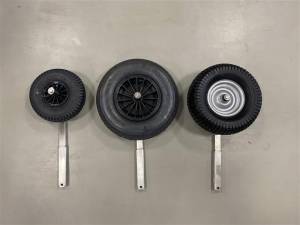
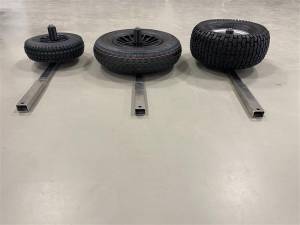
Link to accessories and part numbers: Accessories
Contact us if you are interested in bigger wheels.
The measurements in operating mode
Find our recommendations below.
Standard guidance wheels
Should be used on walls with no greater obstacles than 40 mm.
The operating height from the floor up to the middle of the wheel is 230 mm (adjustable to 280 mm if the plastic spacers swap places) when the wheel is mounted upwards.
When the wheel is mounted downwards the hight from the floor to the middle of the wheel is 105 mm.
Wide wheels
Should be used if you have obstacles greater than 40 mm but less than 80 mm.
The operating heights are the same as standard wheels.
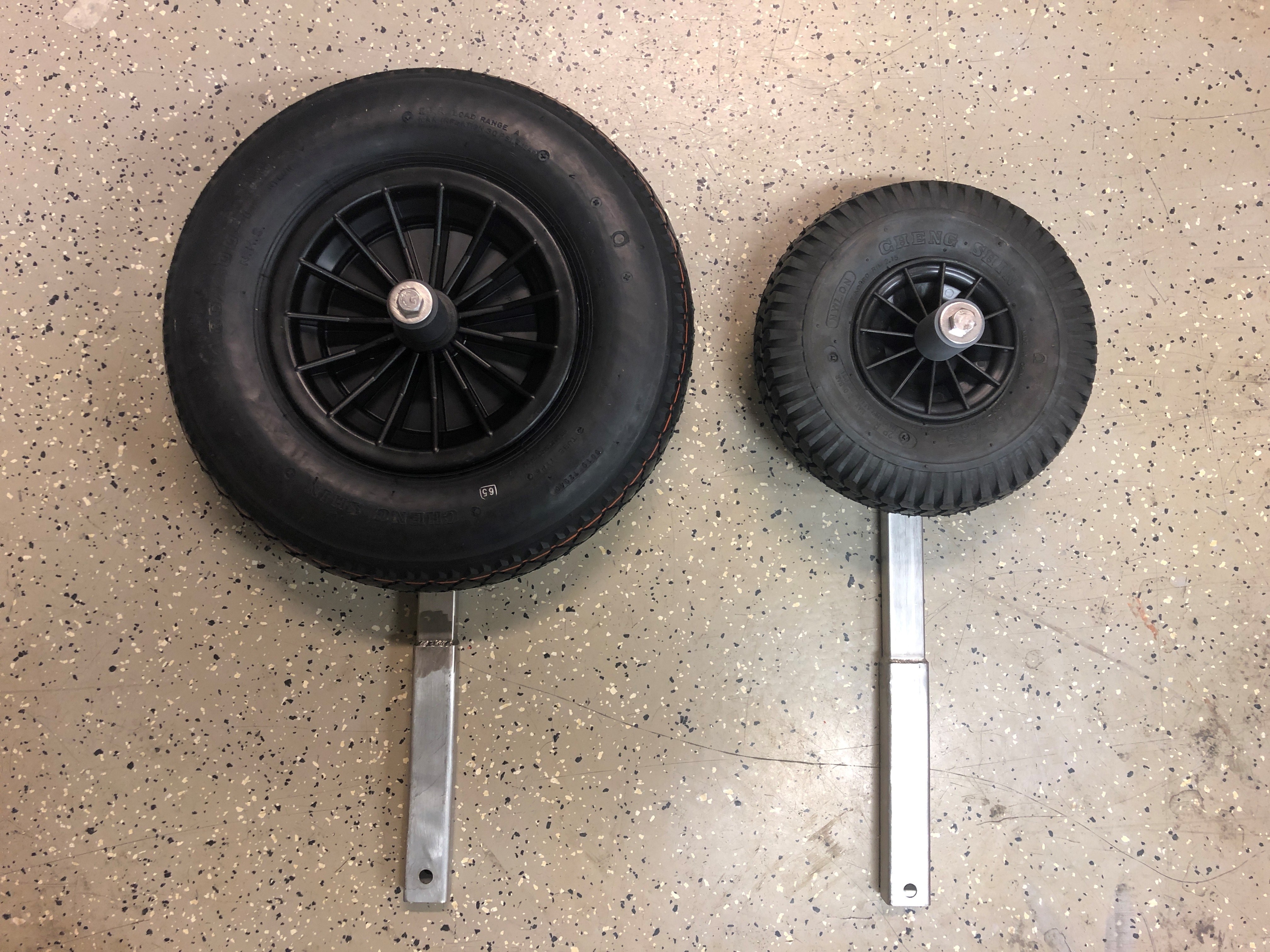
Wide wheels compared to the standard wheels.
High wheels
The main purpose for the high wheels is to have a better balance on horizontal bars compared with the standard and wider wheels since they are 85 mm compared with the high wheels with 140 mm. Use high wheels if the distance between horizontal bars is greater than 50 mm.
Can go over obstacles greater than 40 mm.
Can only be mounted with the wheel upwards.
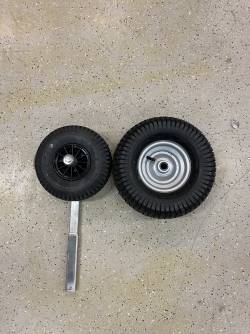 .
.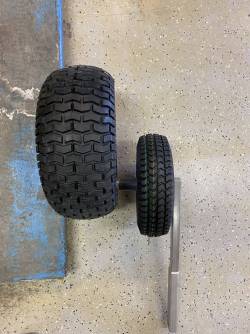
High wheels compared to the standard wheels.
Corner wheels
As an alternative for narrow aisles, corner wheels can be used. These are especially useful in very narrow aisles with no or very small obstacles (less than 10 mm) along the wall and where the driving wheels may get stuck on obstacles on the opposite side of the standard guidance wheels if used.
Troubleshooting
The support wheels are supposed to be soft so they can swallow obstacles on the wall in the aisle, like doors/gates or similar. Soft wheels will make it easier for the robot to have an even travel along the aisle. However, all stables and aisles don't look the same. If the aisle have doors/gates that sticks out too much, the robot might have a too heavy hit when trying to climb over the obstacle. This could lead to slipping wheels that leads up to incorrect positioning for the EVO Cleaner. It can also lead to "Wheels stuck in forward/backwards direction".
Having problems? Check the following list:
- The guidance wheels are filled with 0.5 bar from the factory. Release some air to make the wheels even softer (if the rim takes the hit from the obstacle, then the wheel is too soft).
- If possible, adjust the angle of the support wheels to a straighter position. Steeper angle pushes harder towards the wall. However, to much change on the angle (compared to the position the robot had when the programs were first made) will change the robot position in the aisle. This can effect the programs.
- If possible, adjust the obstacle on the walls to make the robot run more even.
- Change to bigger wheels. Envirologic offers wheels with 400 mm in diameter instead of the standard 250 mm wheels. There are also higher wheels to use if the interior has horizontal pipes. See Different types of guidance wheels above.
There is a lot that comes into play when it comes to guidance wheels and what's possible and what's not.
Things to consider:
- The interior may vary from room to room.
- The angle on the guidance wheels matters. Steeper angle pushes harder on the wall which makes it harder to climb the obstacles.
- Wet floor makes it slippery for the wheels, less traction.
- Wet floor may let the robot push itself sideways easier which may help getting pass the obstacles.
- Dry floors give better traction which may help pushing over obstacles.
- Very dirty floors may cause the wheels to slip.
- High pressurized wheels versus low pressurized wheels.
- If you have narrow driving wheels versus wide driving wheels. Wide driving wheels have better traction (if you have a narrow aisle you might have to use narrow driving wheels).
You may also like to read about: Aisle and robot measurements
